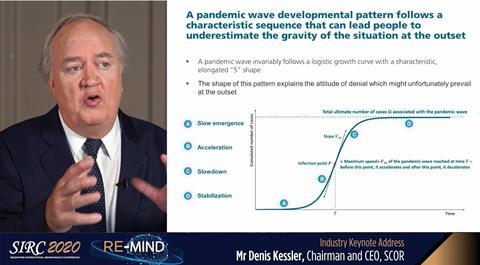Monday 2 November 2020
A vast majority of risk can be visualised, but a virus spread is invisible, insidious and pernicious. People are infinitely more afraid of dangers they cannot see than the danger they can identify. An invisible risk produces more paralysis and anxiety and is considerably more forceful. It is no coincidence that the term ‘virus’ is also used in computer science.
It is also telling that the rare ILS issued by reinsurers to provide specific pandemic risk protection have so far only taken the form of extreme mortality bonds, which specifically cover excess mortality risk.
COVID-19 related charges, booked in the first half of 2020, by insurers and reinsurers globally, are broken down as 90 percent P&C, and 10 percent life. Pure P&C players are faced with a COVID-19 impact whose magnitude is comparable to that of a major natural catastrophe.
Credit and surety and property business interruption exposures resulted from the negative economic consequences of the lockdown. Their magnitude is driven by a myriad of variables directly controlled by public authorities.
All else being equal, the poorer the public risk management, the higher the economic losses associated with the handling of the pandemic and the higher the P&C market exposure to the pandemic event.

SIRC 2020 opens with Deputy Prime Minister, Mr Heng Swee Keat
- 1
- 2
 Currently reading
Currently readingSIRC 2020 - COVID-19 a fractal shock to the reinsurance industry. Denis Kessler
- 3









No comments yet